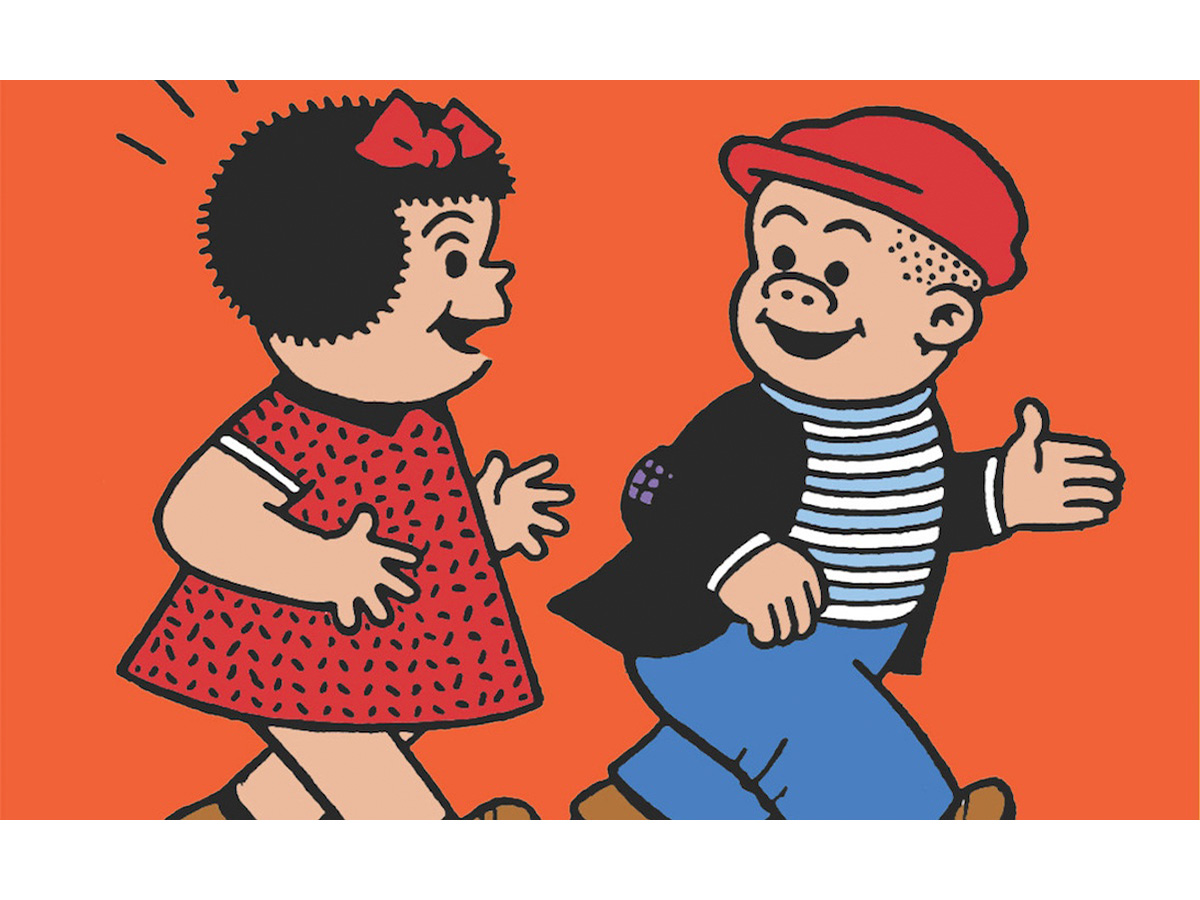Art Spiegelman, luminary cartoonist and author of Maus (1986), once wrote that Peanuts “had the simplicity and depth charge of a haiku.” If the haiku were written by Groucho Marx, the same could be said about Nancy, the Ernie Bushmiller comic strip that ran from 1938 to 1982 in papers across the United States. It remains, for me, the most consistently rewarding and inventive gag comic in the history of American newspaper funnies. Its rhythms and jokes epitomize the art of the short strip, and its economy of line and speech should be absorbed, studied, and revisited repeatedly by all cartoonists.
Bushmiller and his Nancy have recently been the subject of a biography by Bill Griffith, an exegesis of a three-panel strip by Paul Karasik and Mark Newgarden, a reboot by Olivia Jaimes, and a festival at the Billy Ireland Cartoon Library and Museum earlier this year. Before this renaissance, the strip inspired a card game designed by Scott McCloud; countless toys, tchotchkes, and ephemera; numerous works by artist Joe Brainard; and a painting by Andy Warhol.
Long live Nancy! But where is Nancy?

Despite all the deserved adulation, it can be difficult to get a book full of the strips in your hands. Used copies of Nancy books are too expensive. In Los Angeles, where I live, the vast public library system keeps their collections stashed exclusively in the central branch, available for reference only.
But this year, along came Nancy & Sluggo’s Guide to Life, a collection divided into sections of comics about money, food, and sleep, with an introduction by cartoonist Denis Kitchen. In these pages, Nancy, alongside her sometimes-boyfriend Sluggo, takes her revenge on a poor restaurant experience by hilariously amending their signage, puts herself to sleep by dreaming of her school exploding, and laments how much Russian dressing she put on her midnight snack.
I continue to hope for volumes of Nancy that are organized chronologically, not thematically. Reading 20 pages of food-themed jokes in a row can get a little tiring. But that does nothing to dampen my appreciation of Bushmiller’s visual language made available in this new collection, and his mastery of the wordless final panel. The best Nancy strips, the ones with the greatest depth charge, are ones in which the final joke is not a spoken punchline but rather a wordless, surprising image.
Wait, a kid who puts Russian dressing on her snacks? Yes: One of the great things about Nancy is what a lovable weirdo Bushmiller has taken as his subject. She wears her hair ribbon when she sleeps. Numerous gags about her eating jam imply that she essentially shoves her face into the jar for a sweet snack. Nancy’s radical idiosyncrasy contrasts with Bushmiller’s clarity of style, and the juxtaposition pays off remarkably well, over and over again. The title Nancy & Sluggo’s Guide to Life is, on its face, playful hyperbole. But as a cartoonist and lover of comics, the lessons I take from Bushmiller’s pristine panels, comic timing, and unabashed strangeness are indispensable. I can’t think of a more rewarding manual of instruction than this one.

Nancy and Sluggo’s Guide to Life: Comics about Money, Food, and Other Essentials (2024) by Ernie Bushmiller is published by New York Review Comics and is available online and through independent booksellers.

